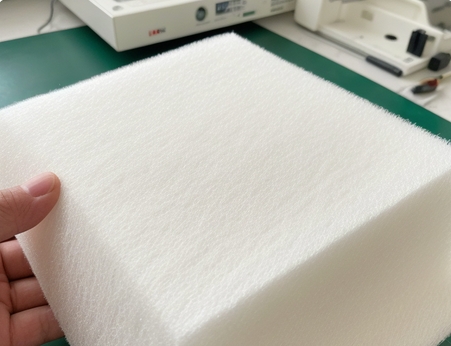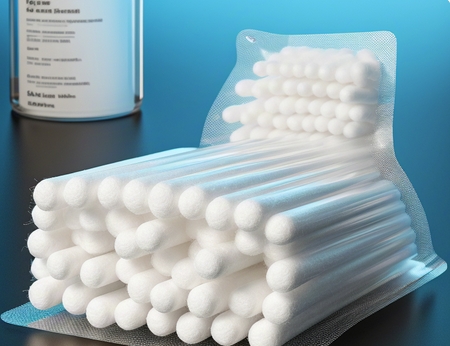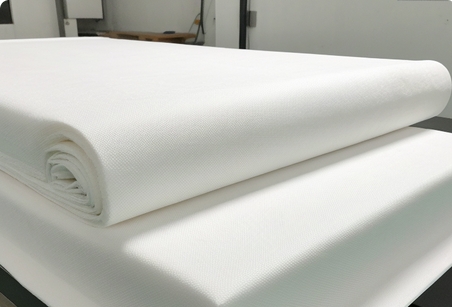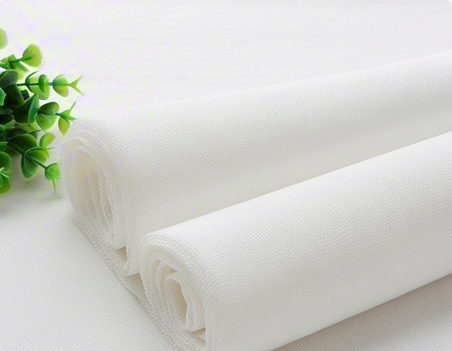Language

As the core cleaning material in the precision industry, dust-free cloth is directly related to the maintenance effect of the clean environment. This special functional fabric is mainly composed of four types of basic materials, each of which has undergone strict electrostatic control and fiber optimization treatment to meet the needs of different clean levels.
Polyester (polyester fiber) is the basic component of dust-free cloth material, accounting for up to 80%-100% in conventional applications. Its molecular chain regularity imparts excellent wear resistance to the material, and combined with the surface hydrophobic treatment process, it can exhibit a particle retention ability below 0.03 μm during semiconductor wafer wiping operation. Industry data shows that clean rooms that meet ISO 14644 Class 5 standards generally use pure polyester dust-free cloth, and the fiber shedding per square centimeter is strictly controlled within 5 pieces.
As a functional additive material, nylon (nylon 6,6) usually forms a composite microfiber structure with polyester at a ratio of 15%-20%. The microporous structure of this two-component material is like a three-dimensional fishing net, and the liquid adsorption efficiency can be increased by 3–5 times with the help of capillary effect. Medical-grade dust-free cloths often use this ratio. In the wiping scenario of joint replacement surgical instruments, the detection value of the residual protein on the surface can be as low as 0.1μg/cm².
Wood pulp composite dust-free cloth materials are mainly used in the field of optical component cleaning. The composite structure of 45% of the needle wood pulp fiber and polyester forms a honeycomb liquid storage unit, which is especially suitable for isopropanol precision wipe in the lens coating process. A third-party inspection report shows that the material's light transmittance loss at 10N pressure is only 0.02%, far better than the 0.15% average level of traditional purified fiber materials.
Under special operating conditions, materials engineers will introduce ES fibers (low melting point composite fibers) to build thermal bonded structures. This modification reduces the dispersion rate of the dust-free cloth edge to below 0.5 ppm, and on the lithium battery diaphragm production line, a wedge-shaped wiper head made of this material can increase the dust retention efficiency to 99.97%. With the development of nonspinning technology, some high-end dust-free cloth materials have begun to adopt graphene coating process, so that the surface resistance is stable in the range of 10^6-10^9Ω.
Tags:
RELATED RESOURCES

Microfiber Clean room Wipes Application Guide: Biopharmaceutical/Fab Cleaning Solutions.
As the core consumable in the field of precision cleaning, the microfiber dust-free cloth is precisely woven b......
More

Should I choose 70% or 99% cleanroom cotton swabs?
Professional grade isopropyl alcohol cleaning tool operation guideIn the field of precision instrument mainten......
More

How to clean room with industrial dust-free cloth?
Guide to operating specifications for professional clean environment surface cleaningIn controlled environment......
More

Analysis of technical parameters of woven cleanroom cloth: Precision manufacturing advantages behind
In ultra-clean environmental operations such as microelectronics manufacturing, biomedicine and precision opti......
More
Related Products
Room 101, Building 1, Angeer Factory, No.4, Hetian Road, Shatian Community, Kengzi street, Pingshan District, Shenzhen, Guangdong, P.R. China 518122
info@wipestar.com
+86-755-89616775
+86-755-89616773
Related Products
RELATED RESOURCES

Microfiber Clean room Wipes Application Guide: Biopharmaceutical/Fab Cleaning Solutions.
As the core consumable in the field of precision cleaning, the microfiber dust-free cloth is precisely woven b.........
More

Should I choose 70% or 99% cleanroom cotton swabs?
Professional grade isopropyl alcohol cleaning tool operation guideIn the field of precision instrument mainten.........
More
WIPESTAR
微信官方公众号